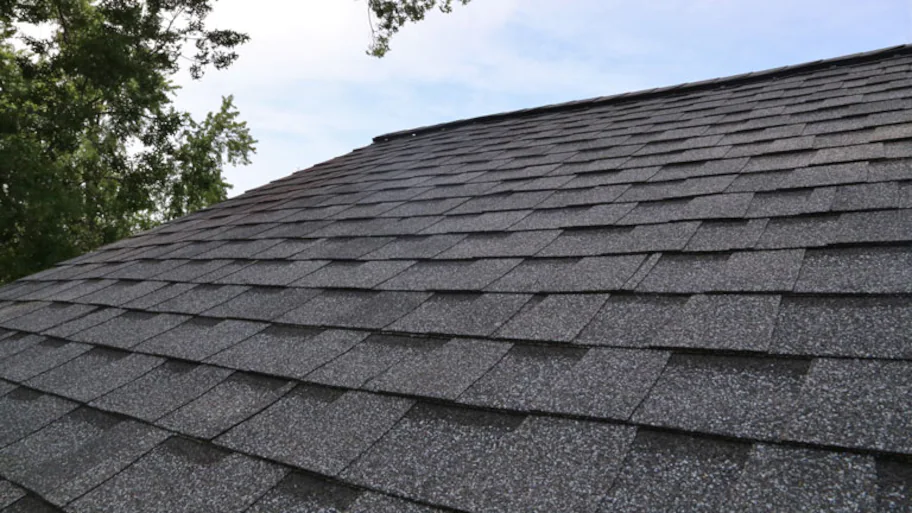The Significance of Selecting Skilled Roofing Companies Gainesville Florida
The Significance of Selecting Skilled Roofing Companies Gainesville Florida
Blog Article
Finest Practices for Ensuring Appropriate Roofing Air Flow
A balanced intake and exhaust air vent proportion, typically 1:300, plays a crucial role, with consumption vents ideally put at the reduced side of the roofing for cool air entry and exhaust vents at the height for cozy air leave. Keeping insulation away from vents is important to protect against airflow restriction.
Understand Ventilation Basics
Correctly recognizing air flow essentials is vital for ensuring the longevity and efficiency of roof. Reliable air flow minimizes wetness build-up and temperature level extremes in the attic room, both of which can result in considerable structural damage in time. A well-ventilated roof helps in stopping typical issues such as mold and mildew growth, wood rot, and ice dams, which can endanger the honesty of the roof covering materials and the underlying frameworks.
The primary goal of ventilation is to facilitate the motion of air, enabling a regular exchange between the outside and interior settings. This equilibrium is achieved through a mix of intake and exhaust vents that interact to preserve optimal air movement. Intake vents, commonly situated along the soffits or eaves, enable fresh air to enter the attic room area, while exhaust vents, typically located at or near the roof ridge, make it possible for warm, humid air to leave.
Key elements affecting the efficiency of roofing system ventilation include correct placement, appropriate sizing, and making certain that both consumption and exhaust vents are unblocked. Normal assessment and maintenance are crucial to recognize prospective obstructions, damages, or ineffectiveness in the air flow system, thereby protecting the roof covering's performance and durability.
Sorts Of Roofing System Vents
Roof vents play a vital role in maintaining effective attic room air flow and, by expansion, the general wellness of the roof. Various types of roof covering vents are offered, each with one-of-a-kind advantages customized to details roof requirements. Ridge vents, for instance, are mounted along the roofing system's optimal, permitting warm, damp air to leave from the attic. They provide continual air flow and blend effortlessly with the roofline, making them both reliable and visually pleasing.

Soffit vents are set up under the eaves and work in tandem with roof vents to make certain a balanced consumption and exhaust system. By enabling cooler air to get in from below, soffit vents assist in the expulsion of warm air through upper vents. Gable vents, situated on the exterior wall surfaces of the attic room, offer another efficient remedy, especially in homes with saddleback roofs.
Assess Your Present Air Flow

Following, take into consideration the age and condition of your roof covering products and ventilation components. Older systems might not follow existing building regulations or might have weakened over time, reducing their efficiency. Conduct a complete evaluation to identify any indicators of deterioration, such as rust, damage, or spaces that could jeopardize the system's performance.
In addition, determine the attic temperature and humidity degrees. Heats and humidity can show inadequate ventilation - roofing companies gainesville florida. Use a hygrometer and thermostat to get exact analyses, comparing them with outside problems. Consistent discrepancies recommend prospective problems that need addressing.
Setup Best Practices
Reliable installment of roof air flow systems is paramount for ensuring optimum performance and longevity. Appropriate installation starts with recognizing the specific air flow requirements of the building and the roof covering it covers. This entails calculating the appropriate ratio of consumption to wear down vents, usually sticking to the 1:300 guideline, which states one square foot of ventilation for every 300 square feet of attic room flooring area.

The placement of vents is equally critical. Intake vents ought to be mounted at the roofing's reduced edge, frequently in the soffits, to permit amazing air to enter. Exhaust vents, on the various other hand, must be mounted near or at the roofing system's height to assist in the leave of warm, damp air. This produces an all-natural airflow that assists preserve temperature and dampness equilibrium within the attic space.
Seal all air vent connections meticulously to prevent air leaks and prospective water seepage. Use high-grade products and follow manufacturer standards to make sure sturdiness and performance. Furthermore, incorporating ridge vents with baffles can dramatically enhance air movement effectiveness by protecting against wind-driven rainfall and snow from entering the attic.
Ultimately, accurate setup of roofing air flow systems alleviates possible issues such as mold and mildew development, ice dams, and architectural damages, making sure the roofing system's stability and the building's total wellness.
Routine Maintenance Tips
Uniformity in maintenance techniques is essential to ensuring the lasting effectiveness of roof air flow systems. During these examinations, make certain that vents are free of particles, nests, and other obstructions that might hamper air flow.
Cleaning up the vents is one more essential job. Utilize a soft brush or a vacuum to get rid of like this dust and particles from intake and exhaust vents. Beware not to harm the vent screens or louvers during the process. In addition, examine the attic room area for any indications of water damages, which can endanger the integrity of the roof.
Appropriate insulation is just as important. Make sure that attic room insulation does not block the vents, as this can drastically restrict airflow. Rearrange or replace it to maintain an efficient obstacle. if any insulation has moved or worked out.
Lastly, replace any type of harmed or missing parts quickly. Damaged vents, split roof shingles, or deteriorated flashing can all contribute to insufficient ventilation and needs to be addressed without delay. Regular upkeep makes certain that the roof covering air flow system operates optimally, thus extending the life expectancy of the roofing itself.
Conclusion
Making sure appropriate roof air flow is critical for keeping the look at this now effectiveness and durability of a roof. Adherence to the 1:300 consumption and exhaust vent ratio, paired with the tactical positioning of vents, is important. Routine semiannual evaluations, particles cleaning, and ensuring insulation does not obstruct air flow are crucial practices. Carrying out these finest practices will certainly foster a well-ventilated roof covering system, thus mitigating possible issues connected to moisture buildup and too much heat, inevitably extending the roof's life expectancy.
A balanced intake and exhaust vent ratio, generally 1:300, plays a pivotal role, with consumption vents ideally put at the reduced edge of the roofing for awesome air entrance and exhaust vents at the optimal for warm air exit. Intake i loved this vents, commonly located along the soffits or eaves, permit fresh air to go into the attic room room, while exhaust vents, often positioned at or near the roof ridge, allow warm, damp air to leave.
Soffit vents are set up under the eaves and job in tandem with roofing vents to guarantee a well balanced consumption and exhaust system. By permitting cooler air to go into from below, soffit vents help with the expulsion of hot air with upper vents. Adherence to the 1:300 consumption and exhaust vent ratio, combined with the critical placement of vents, is vital.
Report this page